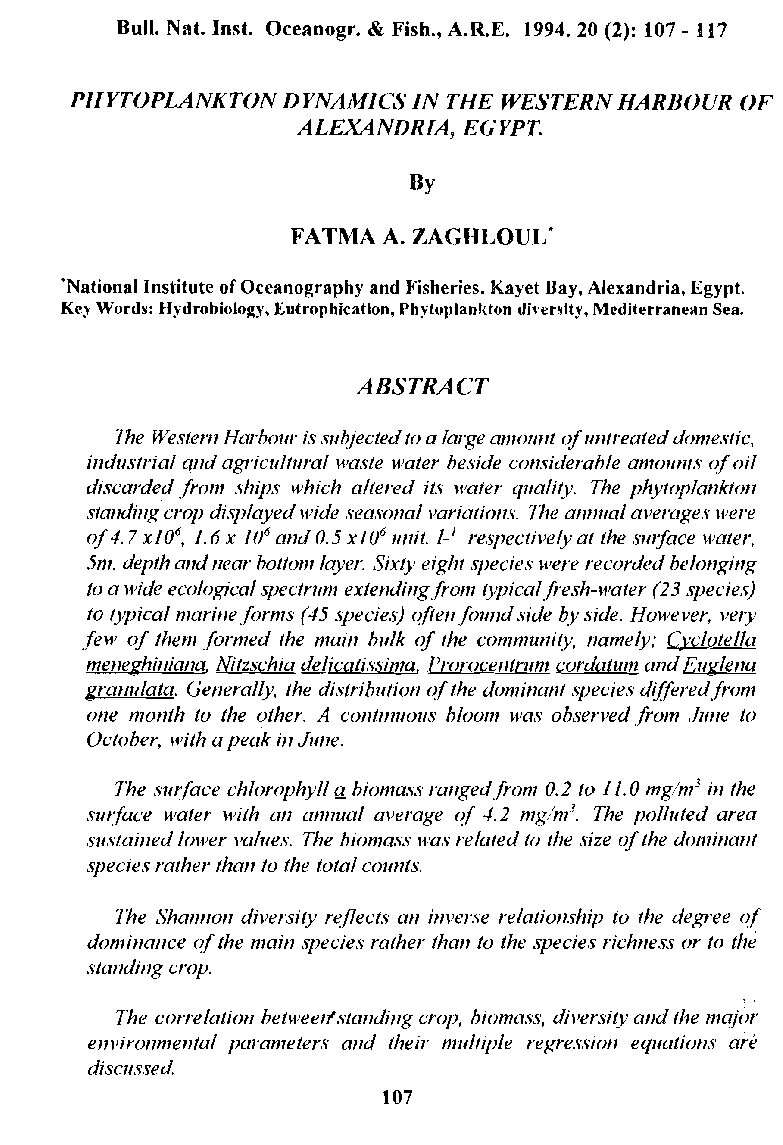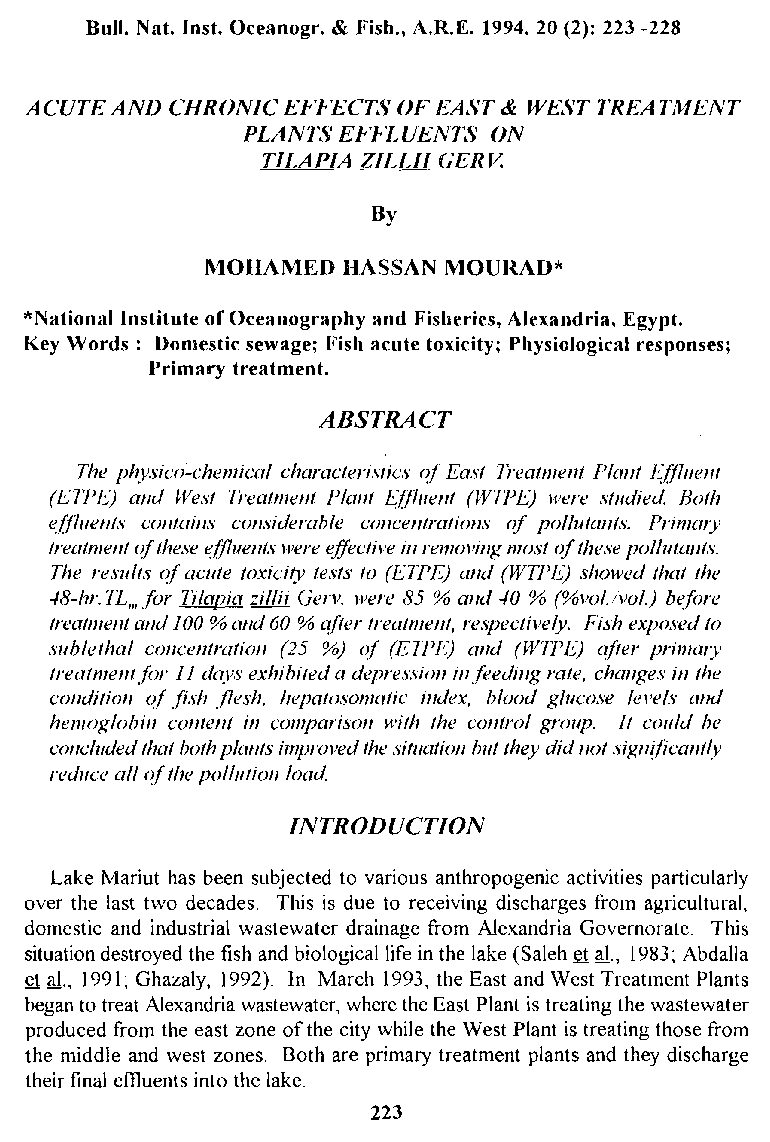Categories
vol-20PHYTOPLANKTON DYNAMIG\’ IN THE WESTERN HARBOUR OF
ALEXANDRIA, EGYPT.
By
FATMA A. ZAGHLOUL’
‘National Institute of Oceanography and Fisheries, Kayet Bay, Alexandria, Egypt.
Key Words: Hydrobiology, Eutrophication, Phytoplankton diversity, Mediterranean Sea.
ABSTRACT
The Westem Harbour is su~jected to a large amount (if untreated domestic,
industrial qnd agricultural waste water beside considerable amounts (?f oil
discarded from ships which altered its water quality. The phytoplankton
stal1dingcrop di~]Jlayed wide seasonal variations. The anl1ual averages were
qf4.7 xl06
, 1.6 X 106 and 0.5 x106 unit. I_I respectively at the surface water,
5m. depth and near bottom layer. Sixty eight species were recorded belonging
to a wide ecological spectrum extendingfrom typicalfresh-water (23 species)
to typical marine forms (45 species) often found side by side. However, velY
few of them formed the main bulk of the community, namely; Cydotella
meneghiniana, Nitzschia delicatissima, Prorocentrum cordatum and Euglena
granulata. Generally, the distribution (if the dominant species differedfrom
one month to the ‘!ther. A continuous bloom was observed from June to
October, with a peak in June.
The surface chlorophyll q biomass rangedfrom 0.2 to 11.0 mg/m3 in the
sUllace water with an annual average (?f 4.2 mg/m3
• The polluted area
sustained lower values. The biomass was related to the size of the dominant
~pecies rather than to the total counts.
The Shannon diversity reflects an inverse relatiomhip to the degree qf
dominance (if the main species rather than to the species richness or to the
standing crop.
\
The correlation betweeltstanding crop, biomass, diversity and the major
environmental parameters and their multiple regression equations are
discussed







